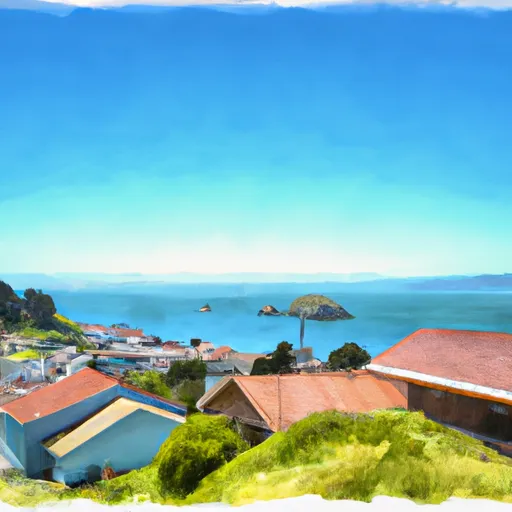-
 Snoflo Premium
Snoflo Premium
Get unlimited access to all our content
With no Ad interruptions! - Start Your Free Trial Login with existing account
Jenner
Eden Index
Climate
9.2
•
Recreation
3.5
•
Community
•
Safeguard
4.9/10

Jenner, California is a small coastal town located in Sonoma County. It is nestled along the Pacific Ocean and offers a mild Mediterranean climate. Summers in Jenner are generally cooler with temperatures ranging from the mid-60s to the low 70s Fahrenheit, while winters tend to be mild with temperatures ranging from the mid-40s to the mid-50s Fahrenheit. The coastal location brings about frequent fog and cool breezes, creating a comfortable climate throughout the year.
Jenner is also home to the Russian River, which flows into the Pacific Ocean nearby. The hydrology constituents in this area are diverse, with the river providing ample opportunities for fishing, kayaking, and canoeing. The river is known for its steelhead and salmon runs, attracting anglers from far and wide. Hiking enthusiasts can explore the nearby Jenner Headlands Preserve, a protected area that offers stunning coastal views and diverse wildlife.
Additionally, Jenner's proximity to the Sonoma Coast State Park makes it an ideal destination for outdoor recreation. Visitors can enjoy activities such as hiking, beachcombing, picnicking, and birdwatching. The rugged coastline and sandy beaches provide a picturesque backdrop for outdoor enthusiasts to explore and unwind.
What is the Eden Index?
The Snoflo Eden Index serves as a comprehensive rating system for regions, evaluating their desirability through a holistic assessment of climate health, outdoor recreation opportunities, and natural disaster risk, acknowledging the profound impact of these factors on livability and well-being.
Climate Health Indicator (CHI): 9.2
Jenner receives approximately
1476mm of rain per year,
with humidity levels near 63%
and air temperatures averaging around
14°C.
Jenner has a plant hardyness factor of
10, meaning
plants and agriculture in this region tend to thrive here all year round.
By considering the ideal temperature range, reliable water supplies, clean air, and stable seasonal rain or snowpacks, the Climate Health Indicator (CHI) underscores the significance of a healthy climate as the foundation for quality living.
A healthy climate is paramount for ensuring a high quality of life and livability in a region, fostering both physical well-being and environmental harmony. This can be characterized by ideal temperatures, reliable access to water supplies, clean air, and consistent seasonal rain or snowpacks.
Weather Forecast
Streamflow Conditions
Northern California Coastal
Area Rivers
Northern California Coastal
Snowpack Depths
Northern California Coastal
Reservoir Storage Capacity
Northern California Coastal
Groundwater Levels
Recreational Opportunity Index (ROI): 3.5
The Recreational Opportunity Index (ROI) recognizes the value of outdoor recreational options, such as parks, hiking trails, camping sites, and fishing spots, while acknowledging that climate plays a pivotal role in ensuring the comfort and consistency of these experiences.
Access to outdoor recreational opportunities, encompassing activities such as parks, hiking, camping, and fishing, is crucial for overall well-being, and the climate plays a pivotal role in enabling and enhancing these experiences, ensuring that individuals can engage in nature-based activities comfortably and consistently.
Catastrophe Safeguard Index (CSI):
The Catastrophe Safeguard Index (CSI) recognizes that natural disaster risk, encompassing floods, fires, hurricanes, and tornadoes, can drastically affect safety and the overall appeal of an area.
The level of natural disaster risk in a region significantly affects safety and the overall livability, with climate change amplifying these risks by potentially increasing the frequency and intensity of events like floods, fires, hurricanes, and tornadoes, thereby posing substantial challenges to community resilience and well-being.
Community Resilience Indicator (CRI):
The Community Resilience Indicator (CRI) recognizes that education, healthcare, and socioeconomics are crucial to the well-being of a region. The CRI acknowledges the profound impact of these elements on residents' overall quality of life. By evaluating educational resources, healthcare accessibility, and economic inclusivity, the index captures the essential aspects that contribute to a thriving community, fostering resident satisfaction, equity, and social cohesion.

